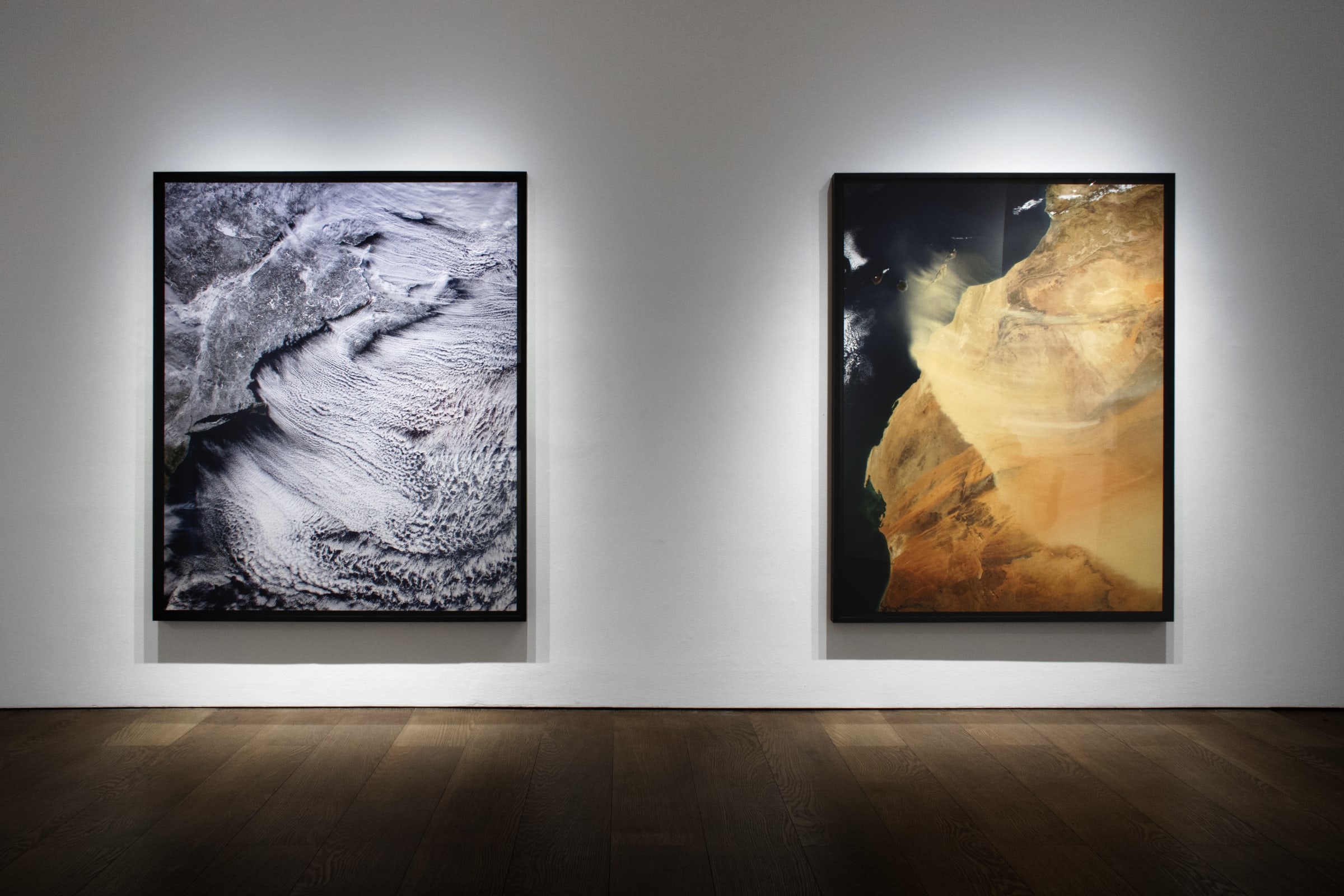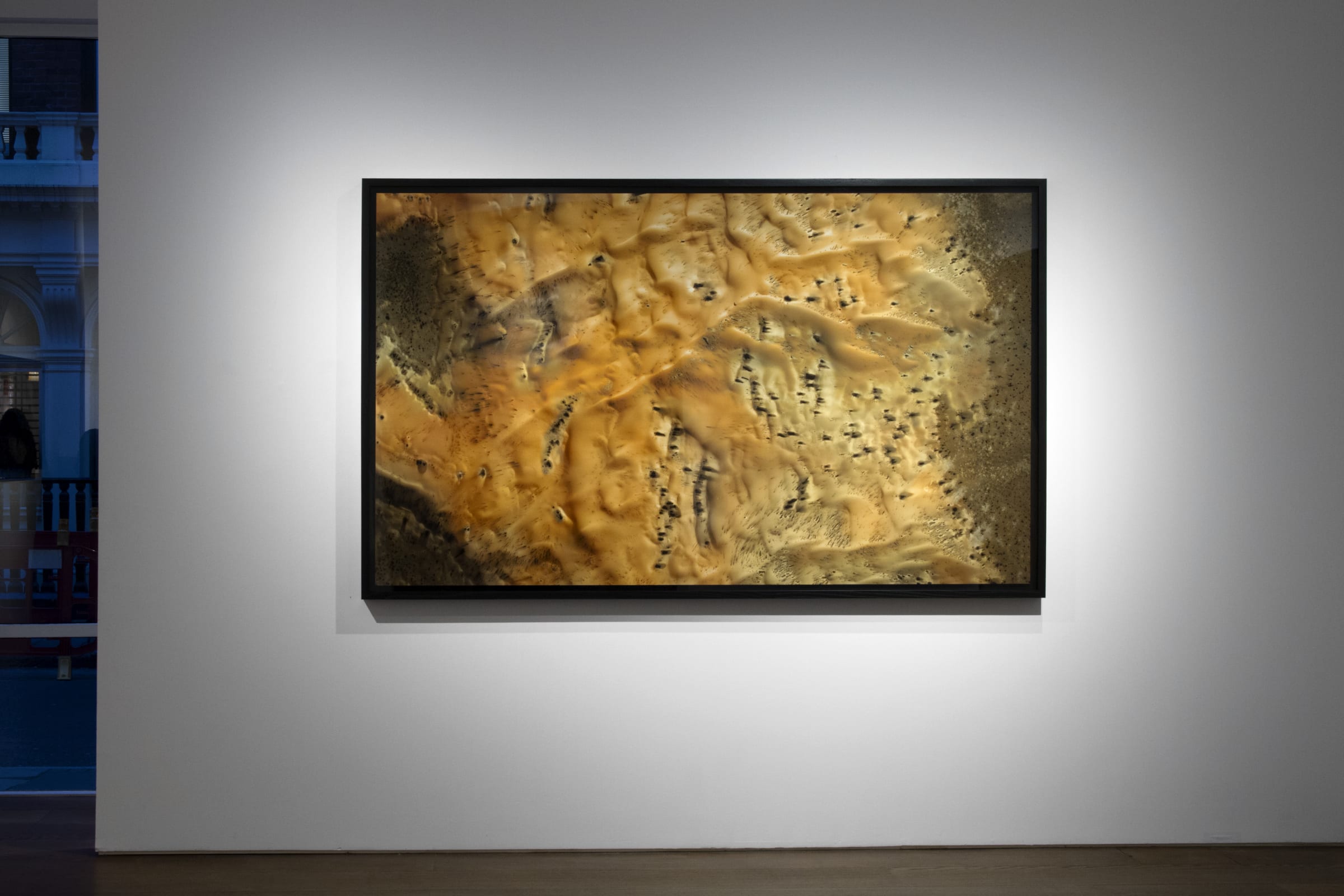Overview
This body of work, constructed from fragments captured by machines hundreds of millions of miles from Earth, explores the visual legacy of over five decades of robotic space exploration, marking a significant new chapter in the history of visual representation.
Flowers Gallery is pleased to present an exhibition of new and recent photographs by Michael Benson. This is his first solo exhibition with the Gallery.
For more than a decade, Benson has used raw image data from robotic interplanetary missions to create large-format landscape photographs of the planets, their moons and the Sun. This body of work, constructed from fragments captured by machines hundreds of millions of miles from Earth, explores the visual legacy of over five decades of robotic space exploration, marking a significant new chapter in the history of visual representation. Benson’s appropriation and re-positioning of materials originally acquired for scientific research, seeks to radically reframe the limits of visual and conceptual horizons; looking, as he describes, “through the eyes of our post-human avatars.”
The images in Atmospheres reveal uncanny similarities between atmospheric effects on Earth and our most similar planetary neighbour, Mars. The term ‘atmosphere’, (from the Ancient Greek, meaning vapour in the shape of a sphere), is used to describe the envelope of gases surrounding a planet, and also invites a subjective view of the extraterrestrial landscape, informed by our sensory responses to atmospheric phenomena on Earth.
Benson’s images highlight the contrasts between worlds with and without atmospheres (the Earth and its airless satellite, the Moon); and the visible traces of atmosphere and climate conditions on Earth and Mars, from the aeolian sand dunes on the surface of Mars, swept into their characteristic waveforms by Martian winds; to the clouds of desert sand on Earth, carried across the Western Sahara. In the near-full view of Earth, with Hurricane and Sahara Dust, ice can be seen retreating from Canada’s Hudson Bay; while Frosted Mars Dunes in Winter, created from imagery captured by a Reconnaissance Orbiter, shows a frigid patina of seasonal carbon dioxide covering its southern hemisphere. In Rover Tracks in Gale Crater, the hazy sky and graduating horizon are caused by the scattering effects of light and suspended particles of dust, demonstrating the ways in which atmosphere determines how depth of field is perceived. Similarly, Sunset on Mars, which depicts an inverse colour graduation to sunsets typically seen on Earth, from a central blue glow radiating outwards into copper hues, suggests how the interaction of light and atmosphere shapes our impressions of beauty within the landscape, both on our own planet and in other worlds.
This body of work, constructed from fragments captured by machines hundreds of millions of miles from Earth, explores the visual legacy of over five decades of robotic space exploration, marking a significant new chapter in the history of visual representation.
Works
















